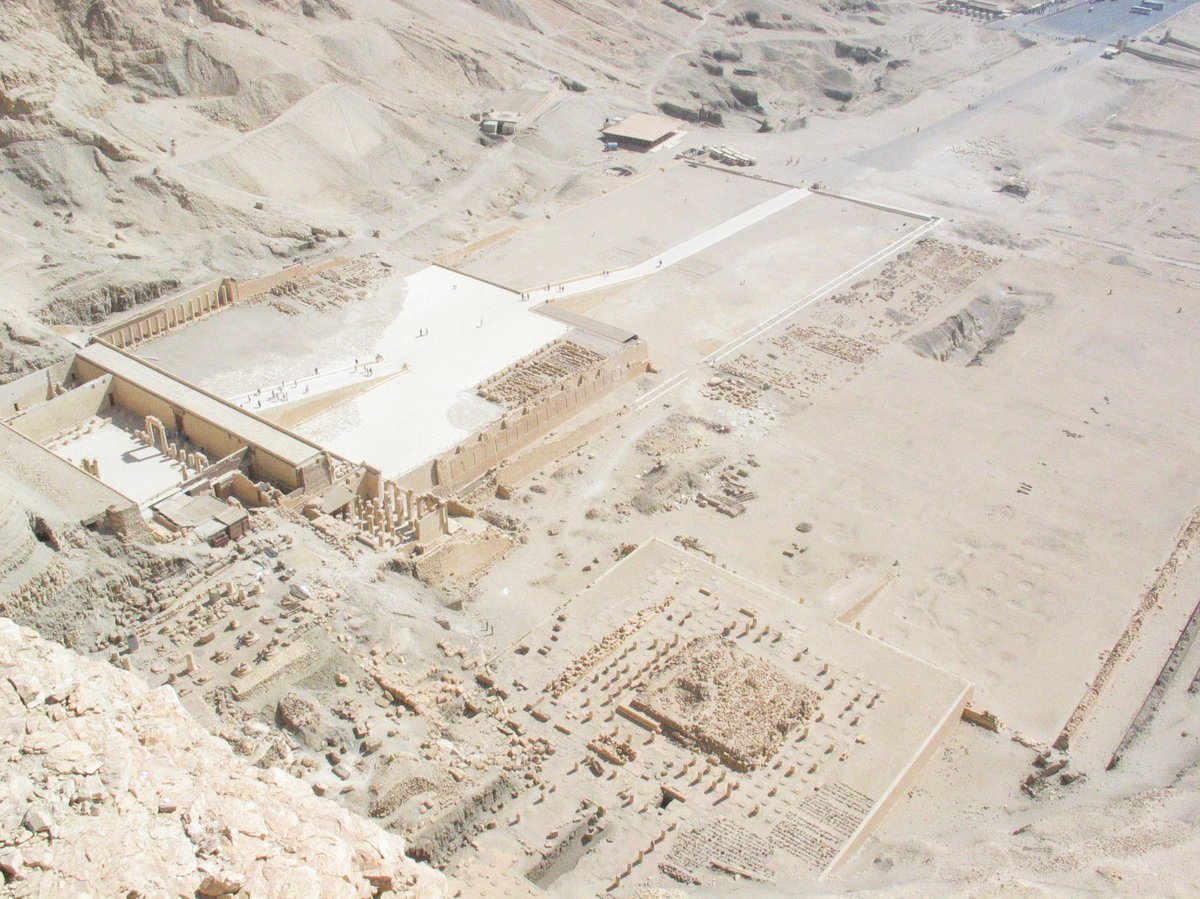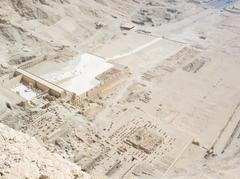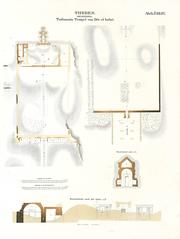
Mortuary Temple of Thutmosis III: Visiting Hours, Tickets, and Travel Guide in Luxor, Egypt
Date: 15/06/2025
Introduction
The Mortuary Temple of Thutmosis III, located on Luxor’s west bank within the Deir el-Bahari complex, stands as a compelling testament to ancient Egypt’s religious devotion, architectural brilliance, and royal legacy. Constructed during the Eighteenth Dynasty, this temple was dedicated to both the deified Pharaoh Thutmosis III and the god Amun-Ra. It played a crucial role in Egypt’s spiritual and political landscape, serving as a cult center to secure the pharaoh’s eternal life and reinforce his divine legitimacy. Unlike the nearby and more frequented Mortuary Temple of Hatshepsut, Thutmosis III’s temple offers a quieter, yet deeply rewarding experience for visitors, set dramatically against the cliffs of Deir el-Bahari.
This guide presents detailed historical context, architectural highlights, essential visitor information—including current visiting hours, ticketing details, accessibility tips, and recommended itineraries—and practical travel guidance for anyone interested in exploring this remarkable Luxor historical site.
Table of Contents
- Historical Context of the Mortuary Temple of Thutmosis III
- Purpose and Religious Significance
- Construction History and Phases
- Architectural Features
- Decorative Program and Artistic Achievements
- Visitor Information
- Site Access and Nearby Attractions
- Archaeological Research and Conservation
- Frequently Asked Questions (FAQ)
- Conclusion and Recommendations
- References and Further Reading
Historical Context of the Mortuary Temple of Thutmosis III
The Eighteenth Dynasty and the Rise of Thutmosis III
The Eighteenth Dynasty (c. 1550–1292 BCE) is renowned as a golden age in ancient Egyptian history, marked by vast territorial expansion, flourishing arts, and monumental building projects. Thutmosis III, its sixth pharaoh, ascended the throne in 1479 BCE, initially as co-regent with his stepmother Hatshepsut. It was only after Hatshepsut’s death in 1458 BCE that Thutmosis III assumed full kingship, embarking on a remarkable 54-year reign that elevated Egypt’s power and prestige (Wikipedia, History Skills).
Architectural and Religious Significance
Royal mortuary temples like Thutmosis III’s were essential to New Kingdom religious tradition. Situated on the west bank—the “land of the dead”—these temples were not only places of worship for the deceased king but also for the gods, particularly Amun-Ra. The Mortuary Temple of Thutmosis III, also called Djeser-Akhet (“Holy of Horizons”), sits near his tomb (KV34) and the iconic temple of Hatshepsut, emphasizing its place in the sacred Theban landscape (Sailing Stone Travel, Ancient Egypt Online).
Construction and Layout
Built towards the end of Thutmosis III’s reign, the temple comprised a sanctuary to Amun-Ra, administrative structures, courtyards, workshops, and massive enclosure walls. Excavations have revealed relief fragments illustrating military conquests and religious ceremonies, as well as evidence of ongoing use into the Ramesside period (APCZ).
Thutmosis III: The Warrior Pharaoh
Widely hailed as the “Napoleon of Ancient Egypt,” Thutmosis III led at least 17 military campaigns, expanding Egypt’s empire from Nubia to Syria. His triumphs are recorded in inscriptions at Karnak, including detailed lists of tribute and exotic species brought to Egypt (National Geographic).
Political and Cultural Legacy
Thutmosis III’s reign was marked by peace and prosperity (the so-called “Pax Egyptica”), robust administration, and ambitious building projects. Despite his efforts to diminish Hatshepsut’s legacy, the proximity of their mortuary temples demonstrates a nuanced relationship within the royal family (World History Encyclopedia).
Archaeological Discoveries and Modern Research
Modern excavations have uncovered the temple’s administrative quarters, workshops, priestly residences, and thousands of relief fragments. These findings have illuminated the temple’s original function and religious importance (APCZ).
Purpose and Religious Significance
The temple’s primary function was to maintain the cult of the deified Thutmosis III and secure his eternal life through offerings and rituals. It was a focal point for the annual “Beautiful Festival of the Valley,” during which the cult statue of Amun journeyed from Karnak to visit the mortuary temples on the west bank, reinforcing the king’s divine legitimacy (PCMA UW).
Construction History and Phases
Historical Context
Thutmosis III’s temple was constructed after the completion of Hatshepsut’s temple, in the later years of his reign (c. 1435–1425 BCE), symbolizing both continuity and historical rivalry (PCMA UW).
Building Materials and Techniques
Primarily utilizing limestone and sandstone, the temple showcases advanced New Kingdom construction, with large stone blocks, intricately carved reliefs, and painted decorations produced by skilled artisans (Lipińska, 1977).
Destruction and Rediscovery
An earthquake in the early 21st Dynasty (c. 1070 BCE) devastated the temple, which was later used as a quarry. Less than half of the decorated walls survive, mostly as fragments. The site was rediscovered in 1962 by the Polish archaeological mission, launching ongoing excavation and conservation (PCMA UW).
Architectural Features
Layout and Orientation
The temple is oriented east-west, facing the Nile and built against the cliffs of Deir el-Bahari. Its three-level terraced design, connected by ramps, echoes that of Hatshepsut’s temple but on a more intimate scale (Czerner, 2015).
Main Components
- Forecourt and Entrance: Monumental gateway and open forecourt once marked by pylons inscribed with royal achievements.
- Hypostyle Hall: Rows of decorated columns, including a Hathor shrine. Recent studies have focused on the roof and column capitals (Caban, 2015).
- Sanctuary and Chapels: The sanctuary dedicated to Amun-Ra and chapels for other deities, serving as the center for ritual activity.
- Relief Decoration: Walls depicting divine birth, military campaigns, offerings, and festival processions, much reconstructed from fragmented remains (Wiercińska, 2006).
Unique Innovations
- Integration with the cliffs, symbolizing the king’s divine connection.
- Enlarged doorways and careful use of light to enhance processional movement and spiritual atmosphere (Wiercińska, 2017).
Decorative Program and Artistic Achievements
The temple’s reliefs depict royal rituals, military victories, scenes of divine birth and coronation, and festive processions. The artistic program reaffirms Thutmosis III’s divine legitimacy and immortalizes his achievements. Thousands of reconstructed fragments now reveal the temple’s original splendor (PCMA UW).
Visitor Information
Visiting Hours
- Typical Hours: Open daily from 6:00 AM to 5:00 PM, with last entry 30 minutes prior to closing.
- Seasonal Variation: Hours may change seasonally or for special events; check official resources before your visit.
Tickets and Entry
- Where to Buy: Tickets are available at the Deir el-Bahari entrance or as part of combined passes for Luxor’s archaeological sites.
- Prices: Vary by nationality and age group; check the latest fees via official tourism channels.
- Guided Tours: Local guides are available and highly recommended to enrich your understanding of the site.
Accessibility
- Site Terrain: The temple features uneven ground and steps; wheelchair access is limited.
- Advice: Wear comfortable shoes and bring sun protection. Contact site management in advance for assistance if needed.
How to Get There
- Location: West bank of Luxor, within Deir el-Bahari.
- Transport: Accessible by taxi, organized tours, or ferry from the east bank.
Nearby Attractions
- Within Walking Distance: Mortuary Temple of Hatshepsut, Temple of Mentuhotep II.
- Short Drive: Valley of the Kings (including Thutmosis III’s tomb, KV34), Ramesseum, and other New Kingdom sites.
Special Events and Photography
- Festivals: Occasionally, the Beautiful Festival of the Valley reenactments take place.
- Photography: Allowed, but flash and tripods may be restricted to protect reliefs.
Archaeological Research and Conservation
Ongoing research, led since 1962 by the Polish Centre of Mediterranean Archaeology (University of Warsaw), continues to reveal new insights into the temple’s construction, decoration, and religious function, in collaboration with the Egyptian Ministry of Antiquities (PCMA UW), (Fundación Palarq).
Frequently Asked Questions (FAQ)
Q: What are the opening hours?
A: Open daily from 6:00 AM to 5:00 PM (last entry 30 minutes before closing); check for seasonal changes.
Q: How do I buy tickets?
A: At the site entrance or as part of combined passes; guided tours often include tickets.
Q: Is the site accessible for visitors with disabilities?
A: Accessibility is limited; uneven ground and steps are present. Contact management for assistance.
Q: Are guided tours available?
A: Yes, and they are highly recommended.
Q: Can I take photographs?
A: Yes, generally permitted, but restrictions may apply for flash and tripods.
Conclusion and Recommendations
The Mortuary Temple of Thutmosis III is a must-see for anyone interested in Egypt’s ancient history, architectural innovation, or royal mortuary traditions. Its serene setting, rich archaeological discoveries, and profound historical resonance offer a memorable experience distinct from Luxor’s more crowded sites. To maximize your visit, arrive early, consider a guided tour, and combine your trip with other west bank wonders. For up-to-date information, download the Audiala app and consult official archaeological and tourism resources.
References and Further Reading
- Sailing Stone Travel: Touring the Temples of Luxor’s West Bank
- Polish Centre of Mediterranean Archaeology: Deir el-Bahari, Temple of Thutmosis III
- Fundación Palarq: Excavaciones e investigaciones en el templo del faraón Tutmosis III en Luxor
- National Geographic: Thutmose III
For the latest discoveries, expert insights, and travel tips, follow our social media channels and download the Audiala app to enhance your experience at the Mortuary Temple of Thutmosis III and other Luxor historical sites.
































































